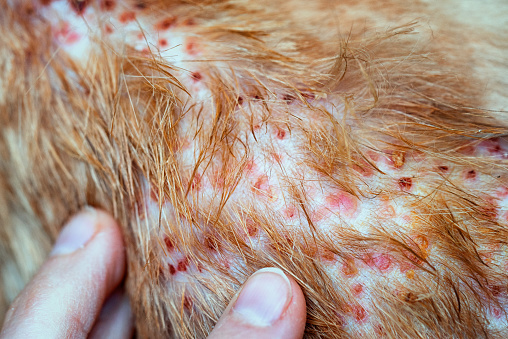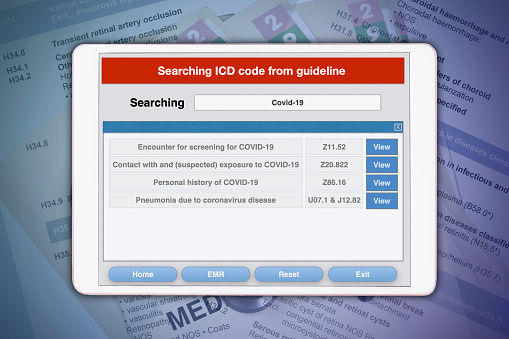Cat Skin Diseases Explained
Are you unsure what to do if you suspect your cat has a skin disease? This article will explain what a skin infection or dermatitis looks like in your feline friend and how to treat it at home. You can also find out what you can do to help your feline friend feel better.
How do you treat skin disease in cats?
There are several types of skin disease in cats, and a veterinarian can determine the cause and prescribe the right treatment. The first step is to get a complete physical examination. If you see abnormalities on your cat’s skin, such as redness, loss of hair, or a rash, you may be dealing with a serious skin disease. During this examination, your veterinarian will also look for parasites and determine whether they’re causing your cat’s problem.
Some of the most common skin diseases in cats involve allergies or physical injuries. However, some cats can also develop skin conditions related to food or airborne particles. These conditions can lead to itchiness, which leads to scratching. Unfortunately, this can lead to further damage to the cat’s skin and create a vicious cycle. As a result, controlling the itchiness is a crucial goal in treating skin disease in cats.
Cats with white fur are especially susceptible to sunburn. Sunburn can cause scabs and irritation, and it can also lead to skin cancer. Another common skin disease in cats is eosinophilic granuloma complex, a condition in which immune cells release inflammatory substances. The symptoms of eosinophilic granulitis include raised bumps, sores, and ulcerated skin.
What does a skin infection look like on a cat?
The symptoms of cat skin infections are not always immediately obvious. Depending on the type of infection, your cat could have pustules, discharge, or redness on the skin. There may also be a foul odor. Your pet may also have a hot spot, or a painful lump. In some cases, your cat may chew on it in an effort to relieve the pain. If left untreated, these infections can get worse over time and thicken the skin.
A proper diagnosis is crucial to preventing further damage to your cat. Skin infections are rarely emergencies, but if you suspect that your cat may have a skin condition, you should seek veterinary treatment. In most cases, treatment can be effective and your cat will recover completely. During the healing process, your veterinarian may suggest changes to your cat’s diet or environment to help the skin heal.
Different cats can have different symptoms, so it’s important to consult a veterinarian to determine if your cat is suffering from an infection. Cat skin infections are often painful and itchy, and symptoms can vary depending on the cause of the infection. Depending on the type of infection, your veterinarian may recommend a special shampoo or antibiotics.
What does dermatitis on cats look like?
Dermatitis on cats is a type of skin inflammation caused by allergies. It causes the skin to become red and itchy. It can also lead to crusting and scabbing. In severe cases, your cat may even experience hair loss. However, this condition can be easily treated.
Dermatitis in cats may start as a discrete light-brown crust that is evenly distributed over the cat’s body. It is usually a mild to moderately itchy condition. Your cat may scratch, lick, or bite to alleviate the itching. In more severe cases, pustules may develop, but you should not try to pop them.
Cats can also suffer from bacterial infections. These infections can be treated with antibiotics, but they may recur if the underlying skin problem is not properly treated.
How can I treat my cats skin infection at home?
Treatment for cat skin infection often involves treating both the infection and the underlying cause of the problem. This helps prevent recurrence. Medicated shampoos, topical ointments, and oral antifungal medications are common options. In more severe cases, medications and IV fluids may be administered. In such cases, your pet may need to be hospitalized. While you can try home treatments, you should be aware of the side effects that you might experience.
First, apply antibacterial soap to the affected area. You can also apply a bandage or gauze. Make sure to use a clean bandage, as sticky materials may pull your pet’s fur and irritate the wound. It is also important to change the bandage on a daily basis.
Another home remedy for cat skin infection is apple cider vinegar, which is a common household item. Apple cider vinegar is high in acetic acid and is especially helpful for itchy skin. You can mix it with water to make it easier to apply. It can be sprayed or soaked on the affected area. It helps kill pathogens and reduces the itchiness and redness of the skin.
What ointment is safe for cats?
When using topical medications for your pets, it is important to follow proper safety guidelines. Most human-grade antibiotic ointments are also safe for use on pets. If your cat has a more severe condition, however, you should consult a veterinarian. He or she may prescribe a cat-specific antibiotic ointment.
Neosporin is an over-the-counter antibiotic ointment. It contains three separate antibiotics and a pain reliever. However, some cats can be allergic to Neosporin. Neosporin should not be used on severe wounds or on wounds where severe infection is likely.
Terramycin ointment is an antibacterial ointment, but it is not a good treatment for viral infections. It is better to use antiviral drugs in combination with antibiotics to treat viral infections. Terramycin is also not suitable for cats who are allergic to oxytetracycline or Polymyxin. Terramycin ointment may cause itching and swelling of the eye lids.
What can I put on my cat’s irritated skin?
You can use a variety of home remedies to soothe your cat’s irritated skin. One of the most popular is apple cider vinegar, which contains acetic acid and is particularly good for itchy skin. Mix 1/2 cup vinegar with one cup water and use the solution as a soak or a spray. This treatment is safe and will kill pathogens while reducing itchiness.
Another common remedy is oatmeal, which has soothing, moisturizing, and nourishing properties. This remedy will relieve your cat’s itch and irritated skin right away. It will also soften dry skin and keep it from itching for a couple of days. Oatmeal also has anti-inflammatory properties, so it will help prevent future occurrences of itching. You can buy oatmeal spray or make your own, but a homemade version is best.
Some cats have skin conditions caused by allergies, such as atopic dermatitis. This condition can be caused by a number of factors, including food and environmental factors. If you can control these factors, you can help your cat live in a comfortable environment.
Why is my cat so itchy but no fleas?
If your cat has been scratching a lot but you don’t see fleas, there are other causes for their itching. Some of these include other skin conditions, parasitic infections, or allergies. In these cases, keeping your cat entertained can help. Using a cat sanctuary is a great way to provide mental and physical stimulation to your cat.
Another possible cause for cat itching is excessive grooming. Your cat may scratch excessively and this can cause the skin to become too dry. Aside from fleas, a cat may have a dietary deficiency or a skin condition. In the latter case, you can take preventive measures.
Cats can also have fungal infections. A cat may also be suffering from an allergy if they are hypersensitive or allergic to certain substances. A flea infestation is the most common cause of itchy cat skin. There are several treatments for fleas, including Revolution.
How do I know if my cat has mites?
If you suspect that your cat has mites, you should consult your veterinarian to control the infestation. Treating your cat as early as possible with medication will help you treat mites effectively. Your vet can prescribe a medicated treatment or recommend a medication you can purchase over-the-counter. Your cat may need to take the medication for several weeks.
The first step in diagnosing mites in your cat is to check the cat’s ears. If you notice excessive or dark wax, the cat may have ear mites. However, you must be careful when examining your cat’s ears because they are easily mistaken for other ear problems. It’s also helpful to take a sample of the ear discharge to check for mites.
Mites are microscopic parasites that live on cats’ skin and in their hair follicles. They’re not harmful to cats, but they are highly itchy. Symptoms of mite infestation in cats include itchiness and severe hair loss.



